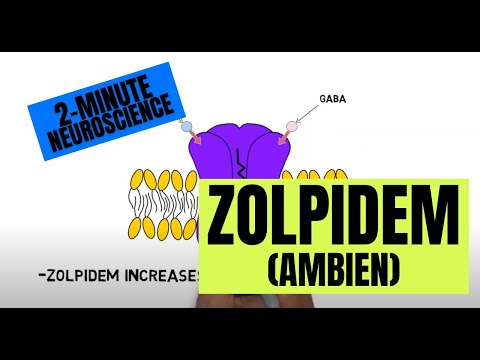- Subjects: Neurosciences
- |
- Contributor:
- Neuroscientifically Challenged
- cranial nerve
- brain
- vestibular system
- cochlea
- sensations
This video is adapted from: https://www.youtube.com/watch?v=OZvIk76cSAI
The vestibulocochlear nerve (cranial nerve VIII) is responsible for carrying information to the brain from the vestibular system and the cochlea. The information from the cochlea deals with hearing, while the information from the vestibular system deals with vestibular sensations, which include information about head position and movement. These vestibular sensations enable us to keep our balance, stabilize our head and body during movement, and maintain posture. In this video, I discuss the anatomy and function of the vestibulocochlear nerve, as well as what symptoms can appear when the nerve is damaged.
The vestibulocochlear nerve consists of a vestibular and cochlear component, which have the functions of carrying information to the brain from the vestibular system and the cochlea, respectively. The information from the cochlea deals with hearing, while the information from the vestibular system deals with vestibular sensations, which include information about head position and movement. This vestibular information enables us to keep our balance, stabilize our head and body during movement, and maintain posture.
The cochlear component of cranial nerve eight begins with neurons that make connections with hair cells, the sensory receptor cells of the auditory system. When hair cells are activated, they relay auditory signals to the the cochlear portion of the nerve through changes in levels of neurotransmitter release. The cochlear nerve travels from the cochlea to the dorsal and ventral cochlear nuclei, which are found at the junction between the pons and medulla. From there, the auditory information is sent to areas in the brainstem and cortex that are involved with auditory processing.
The vestibular component of the nerve also receives stimulation from hair cells, but these cells are found in the vestibular apparatus. From there, the nerve travels to the vestibular nuclei in the pons and medulla. The vestibular nuclei consist of four subnuclei: the inferior, medial, lateral, and superior vestibular nuclei. Neurons leave each of these nuclei to project to various areas in the brain, brainstem, and spinal cord to coordinate head, eye, and body movements to maintain balance and equilibrium, along with other related functions.
Damage to the vestibulocochlear nerve can cause disruption of hearing and/or vestibular functions, generating symptoms like hearing loss, tinnitus, dizziness, loss of balance, and nausea. [1][2]
- Vanderah TW, Gould DJ. Nolte's The Human Brain. 7th ed. Philadelphia, PA: Elsevier; 2016.
- Wilson-Pauwels L, Akesson EJ, Stewart PA, Spacey SD. Cranial Nerves in Health and Disease. 2nd ed. London: BC Decker, Inc; 2002.


























































































































































